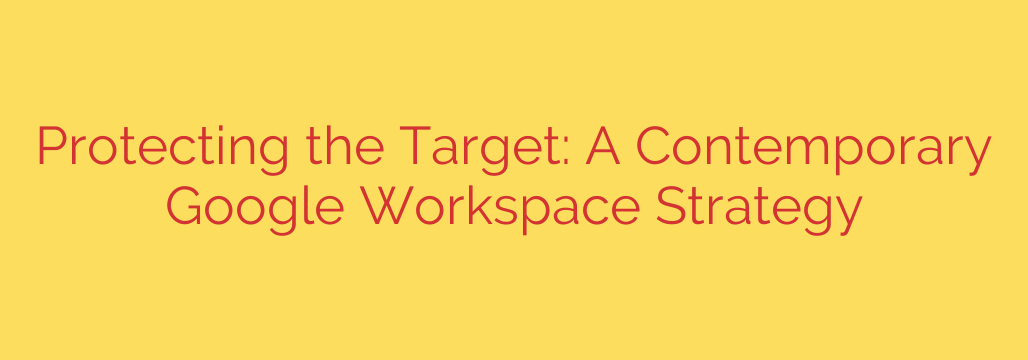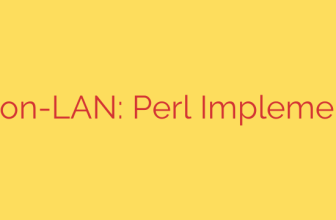
Is Your Google Workspace Truly Secure? A Modern Defense Strategy for Today’s Threats
In today’s digital-first world, Google Workspace is more than just an email platform—it’s the central nervous system for countless organizations. It houses sensitive data, critical communications, and the digital identities of your entire team. While this integration fuels productivity, it also transforms your Workspace into a high-value target for sophisticated cyberattacks.
Simply blocking phishing attempts and enforcing strong passwords is no longer enough. Attackers have evolved, and your security strategy must evolve with them. A modern defense requires a deeper understanding of the new threat landscape and a proactive approach to protecting your most valuable digital assets.
The Shifting Battlefield: Beyond the Phishing Email
Cybercriminals now target the very architecture of Google Workspace, exploiting its interconnected services to gain a foothold, move silently within your environment, and exfiltrate data. Traditional security measures often miss these advanced threats because they aren’t looking in the right places.
The primary goal for an attacker is to gain control of a legitimate identity. Once they have valid credentials—whether through a phishing attack, malware, or purchasing them on the dark web—they can begin their real work.
Key attack vectors that bypass legacy security include:
- OAuth App Abuse: Malicious third-party applications can trick users into granting them extensive permissions to their Google account. Attackers use these permissions to read emails, access files in Google Drive, and send messages on the user’s behalf, all without needing the user’s password again. This creates a persistent backdoor into your system.
- Service Account Exploitation: Service accounts are non-human accounts used by applications to interact with Google APIs. These accounts often have broad permissions and are not monitored as closely as user accounts. If an attacker compromises a service account, they can gain powerful, often undetected, access to your data and infrastructure.
- Exploiting Misconfigurations: A default Google Workspace setup is not a secure one. Simple misconfigurations, such as overly permissive file-sharing settings or disabled security logs, can provide an open door for attackers to steal sensitive information without triggering traditional alerts.
Building a Resilient Defense: Key Principles for Modern Security
To effectively protect your organization, you must adopt a security posture that assumes a breach is not a matter of if, but when. This proactive mindset shifts your focus from prevention alone to rapid detection and response.
1. Treat Identity as the New Perimeter
Your security perimeter is no longer the physical office network; it’s the identity of each user and service account. Every login, permission change, and API call is a security event that must be scrutinized. Securing these identities with robust controls is the cornerstone of modern Google Workspace protection. This means going beyond passwords and implementing layers of verification and access control.
2. Adopt an “Assume Breach” Mentality
Operate under the assumption that an attacker is already inside your environment. This changes your security priorities. Instead of just building higher walls, you must focus on visibility and detection. Your goal is to quickly identify anomalous activity, limit an attacker’s ability to move laterally, and neutralize the threat before significant damage occurs. This requires continuous monitoring of user behavior, application activity, and administrative actions.
3. Prioritize Comprehensive Log Monitoring
Google Workspace generates a massive amount of audit log data that contains the digital fingerprints of every action taken within your environment. This data is invaluable for threat hunting and incident response. Actively monitoring and analyzing Google Workspace logs is critical for detecting suspicious activities, such as logins from unusual locations, sudden changes in user permissions, or large-scale data downloads.
Actionable Steps to Harden Your Google Workspace Today
Protecting your organization requires a multi-layered strategy. Here are essential, actionable steps every administrator should take to enhance their Google Workspace security.
- Enforce Multi-Factor Authentication (MFA): This is the single most effective step to prevent unauthorized account access. Mandate the use of strong MFA methods, such as hardware security keys (e.g., YubiKey) or Google’s Advanced Protection Program for high-risk users.
- Regularly Audit Third-Party OAuth Apps: Don’t let app permissions become a blind spot. Routinely review and revoke access for any third-party applications that are unnecessary, unrecognized, or overly permissive. You can manage this within the Google Admin console under Security > API Controls.
- Secure and Monitor Service Accounts: Treat service accounts like highly privileged user accounts. Implement a strict “principle of least privilege,” ensuring they only have the minimum permissions necessary to function. Regularly rotate their keys and monitor their activity for any signs of compromise.
- Configure Advanced Security Policies: Leverage the full power of your Google Workspace subscription. Enable Data Loss Prevention (DLP) rules to prevent sensitive information from being shared externally, and use Context-Aware Access to restrict access based on user identity, location, and device security status.
- Establish Continuous Monitoring and Alerting: Do not rely solely on Google’s default alerts. Implement a robust monitoring solution or process to analyze audit logs for suspicious patterns. Set up custom alerts for critical events, such as a new admin being created, MFA being disabled for a user, or unusual data exfiltration from Google Drive.
Ultimately, securing Google Workspace is an ongoing process, not a one-time setup. By understanding the modern threat landscape and implementing a proactive, identity-centric security strategy, you can transform your Workspace from a primary target into a well-defended fortress.
Source: https://www.bleepingcomputer.com/news/security/defend-the-target-not-just-the-door-a-modern-plan-for-google-workspace/








